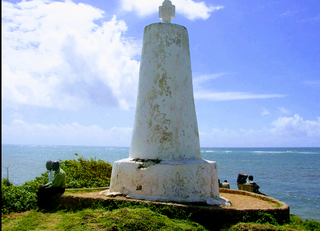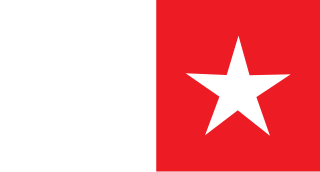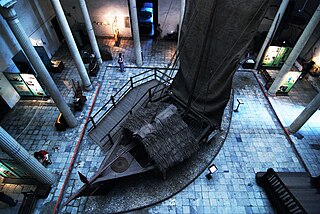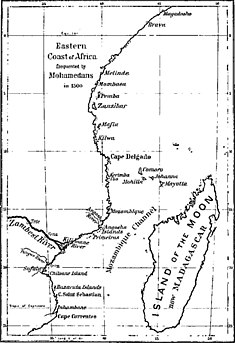Related Research Articles

Swahili, also known by its native name KiSwahili, is the native language of the WaSwahili who are found along the East African coast and litoral islands. Due to concerted efforts by the government of Tanzania, Swahili is one of three official languages of the East African Community (EAC) countries, namely Burundi, Democratic Republic of Congo, Kenya, Rwanda, South Sudan, Tanzania, and Uganda. It is a lingua franca of other areas in the African Great Lakes region and East and Southern Africa, including some parts of the Democratic Republic of the Congo (DRC), Malawi, Mozambique, the southern tip of Somalia, and Zambia. Swahili is also one of the working languages of the African Union and of the Southern African Development Community. The East African Community created an institution called the East African Kiswahili Commission (EACK) which began operations in 2015. The institution currently serves as the leading body for promoting the language in the East African region, as well as for coordinating its development and usage for regional integration and sustainable development. The number of Swahili speakers, be they native or second-language speakers, is estimated to be approximately 200 million.

Malindi is a town on Malindi Bay at the mouth of the Sabaki River, lying on the Indian Ocean coast of Kenya. It is 120 kilometres northeast of Mombasa. The population of Malindi was 119,859 as of the 2019 census. It is the largest urban centre in Kilifi County.

Lamu or Lamu Town is a small town on Lamu Island, which in turn is a part of the Lamu Archipelago in Kenya. Situated 341 kilometres (212 mi) by road northeast of Mombasa that ends at Mokowe Jetty, from where the sea channel has to be crossed to reach Lamu Island. It is the headquarters of Lamu County and a UNESCO World Heritage Site.
The Maa languages are a group of closely related Eastern Nilotic languages spoken in parts of Kenya and Tanzania by more than a million speakers. They are subdivided into North and South Maa. The Maa languages are related to the Lotuko languages spoken in South Sudan.

Wituland was a territory of approximately 3,000 square kilometres (1,200 sq mi) in East Africa centered on the town of Witu just inland from Indian Ocean port of Lamu north of the mouth of the Tana River in what is now Kenya.
The Bajuni Islands are an archipelago in southern Somalia. They are situated in the Somali sea in the southern coast of Jubaland, from Kismayo to Ras Kiyamboni.

Pate (Paté) Island is located in the Indian Ocean close to the northern coast of Kenya, to which it belongs. It is the largest island in the Lamu Archipelago, which lie between the towns of Lamu and Kiunga in the former Coast Province. The island is almost completely surrounded by mangroves.

The Lamu Archipelago is located in the Indian Ocean close to the northern coast of Kenya, to which it belongs. The islands lie between the towns of Lamu and Kiunga, near the Coast Province. It is a part of Lamu District.

Lamu County is located in the Northern Coast of Kenya and is one of the Six Coastal Counties in Kenya. It borders Tana River County in the southwest, Garissa County to the north, Republic of Somalia to the northeast and the Indian Ocean to the South. It lies 1° 40’ and 2° 30’ south and longitude 40° 15’ and 40° 38’ east. The county has a land surface of 6,273.1 km that include the mainland and over 65 islands that form the Lamu Archipelago. The total length of the coastline is 130 km while land water mass area stands at 308 km.

Manda is an island of the Lamu Archipelago of Kenya, known for the prosperous 9th century ports of Takwa and Manda town. The island is now linked by ferry to Lamu and is home to Manda Airport, while Manda Toto island lies to its west. The island is separated from the mainland by the narrow Mkanda channel.

Lamu Island is a port, city, and island just off the shore of Kenya in the Indian Ocean approximately 150 miles from Mombasa. It is a part of the East African country of Kenya. Lamu was founded in the 12th Century. Lamu is one of the longest established, and best preserved remaining settlements of the Swahili tradition in east Africa that remains today. The island has continually been inhabited for over seven hundred years, and continues to be an important center in eastern Africa.
The Segeju are a Bantu ethnolinguistic group mostly based in Tanzania's Tanga Region and Kenya's Kwale County. Most Segeju reside in the small coastal strip between the Tanzanian city of Tanga and the Kenyan-Tanzanian border. However, some Segeju have migrated to urban areas in other parts of Tanzania or Kenya, in hopes of better employment opportunities and quality of life. Segeju migration to urban areas often results in severance of community ties, leading to a lack of transmission of important cultural traditions and language.

The Bajuni people are an Bantu ethnic group mainly residing on the Bajuni Islands and surrounding coastal areas between the port city of Kismayo and Mombasa area of Kenya and Somalia’s southern border.
Kore may refer to:
The Takwa settlement is situated on the south side of Manda Island, in the Lamu District in the coastal province of Kenya. They are the ruins of a town which was abandoned around the 18th century.

The mtepe is a boat associated with the Swahili people. The mtepe's planks are held together by wooden pegs and coir, so it is a sewn boat designed to be flexible in contrast to the rigid vessels of western technique.

Siyu is a settlement on the north coast of Pate Island, within the Lamu Archipelago in Kenya's Coast Province.

Slavery in Somalia existed as a part of the East African slave trade. To meet the demand for menial labor, Bantus from southeastern Africa slaves were exported from the Zanzibar and were sold in cumulatively large numbers over the centuries to customers in East Africa and other areas in Northeast Africa and Asia. People captured locally during wars and raids were also sometimes captured by Somalis and Ethiopians mostly of Shanqella, Oromo and Nilotic origin. However, the perception, capture, treatment and duties of both groups of slaves differed markedly, with Oromo favored because Oromo subjects were not viewed as linguistically and culturally different by their Somali owners.

The Somali–Kenyan conflict has been an issue within Kenya since the colonial period. Problems have ranged from petty skirmishes between the two communities and have led to terrorist attacks, police harassment, extortion, home invasions, physical violence, and massacres perpetrated against Somalis and Kenyans.

Maritime archaeology in East Africa spans the range from the horn of Somalia south to Mozambique, and includes the various islands and island chains dotting the map off the coast of Somalia, Mozambique, Tanzania and Kenya. Primary areas along this coast include the Zanzibar, Lamu, and Kilwa Archipelagos. Although East African societies developed nautical capabilities for themselves, most of the maritime artifacts point to external merchants from Mediterranean cultures like Egypt and Greece, Indian and Chinese from South and East Asia in the early stages, to the great European powers during the Ages of Colonization and Imperialism.
References
- Heine, Bernd & Vossen, Rainer (1980) 'The Kore of Lamu: A contribution to Maa dialectology', Afrika und übersee, 62, 272–288.
- Curtin, Patricia Romero (1985) 'Generations of strangers: the Kore of Lamu', The International Journal of African Historical Studies, 18, 3, 455–472.